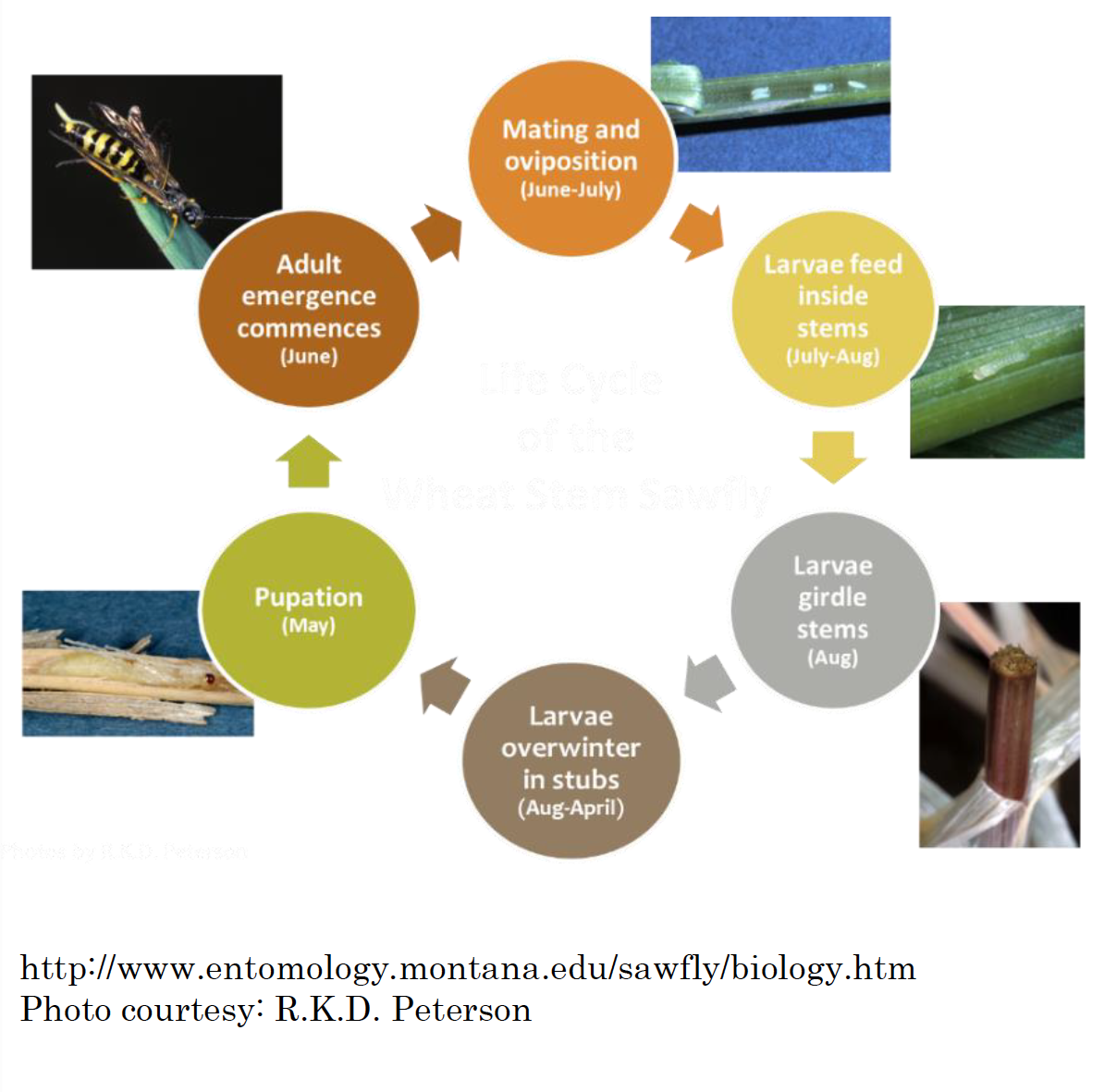Wheat Stem Sawfly
Overview
Estimated economic impacts of wheat stem sawfly (WSS) cephus cinctus Norton (Hymenoptera: Cephidae) for individual farmers in the most productive winter wheat regions in Montana in 2012 were reported between $110,000 and $120,000, representing losses of seven bushels per acre. Despite the long history of incidence wheat stem sawfly in this gregion, constant adaptation of this pest to changing environmental conditions and human behaviors continue to present challenges.
Life Cycle in Montana

Damage
Adult sawflies do not cause direct injury to host plants, but stem boring activity of larvae can cause extensive losses to the plant in two ways:
- Reduction in kernel weight due to reduction in photosynthetic capabilities caused by larval damage to plant's soft tissues.
- Late-seasoning stem girdling by mature larva and subsequent stem lodging.
Sawfly Research at WTARC
In 2013 WTARC research evaluated the efficacy of entomopathogenic nematodes, fungi and low-risk insecticides against WSS. Results showed treatments with these have higher yield production and better control of WSS compared to the untreated control and water spray.
Ongoing Research at WTARC
Evaluating the effect of different species of entomopathogenic nematodes against WSS at two different times:
- Application of nematodes on wheat plant soon after egg hatching (June-July)
- Application of nematodes to the wheat stuble after harvest during fall
Download this information in a PDF format by clicking this link.
